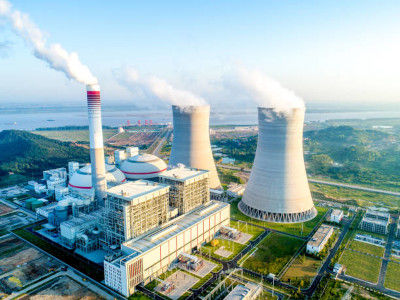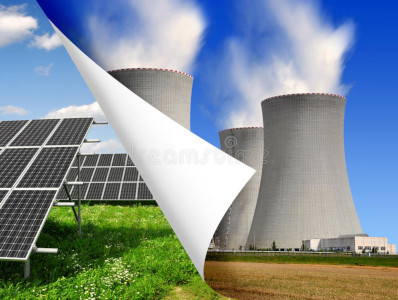
Environmental pollution is probably the biggest problem in the world. You come across it everywhere; You read it in the newspapers, you see it on the News and you can watch videos about it on social media. There is no escaping from it any more. In the last few years, research on finding alternative energy sources has increased. Creating energy in anyway is really important but it can also be extremely polluting for the environment. That is why it sounds really promising when you hear that you can create a lot of energy with nuclear power plants without polluting the environment. However, are there only advantages of nuclear power plants and how exactly does it work?
Before we look at the advantages and disadvantages of nuclear power plants, it is important that we know how they work.
- The first step of creating energy with nuclear power plants is called nuclear fission and takes place in the reactor. The purpose of this step is to create heat. Nuclear fission is a reaction between nucleus of atoms, resulting in releasing energy in the form of heat and radiation (neutrons). Nucleus is the central part of an atom, consisting of a proton(s) and neutron(s). During nuclear fission, atoms are split apart to form smaller atoms, by bombarding them with single neutrons. The most important effect from this for the energy generation process is the heat release.
- The heat causes the water in the steam generator to heat up to a high temperature.
- The formed steam drives on a steam turbine. These consist of multiple blades mounted on a shaft. They rotate very quickly, because of the high pressure of the steam.
- The blades drive generators and they eventually make electrical energy (electricity).

Now that we know how nuclear power plants work, we can look and the advantages and disadvantages. A lot of advantages come with creating energy with nuclear power plants, but the most important ones are;
- Not polluting
As you could read in the introduction, creating energy with nuclear power plants does not pollute the environment. This is the most important advantage of using nuclear power plants. Nuclear power plants are ideal for reducing carbon emissions since they do not emit any greenhouse gases or other pollutants, in contrast to using fossil fuels like coal and gas to produce energy.
- Stable and reliable
The energy source ‘nuclear power plants’ is stable and reliable. The power plants do not need a lot of fuel, if it is not nothing. That is one of the main reasons why it is stable. They often use uranium for the nuclear fusion. Uranium is a naturally-occurring element that you can find in the earth’s crust. Nuclear energy is an inexhaustible source of energy, however it is not renewable. Renewable energy is energy that will always be available to humans and whose usage will not have a negative impact on the environment or the opportunities for future generations.
Creating a huge amount of energy without producing any kind of pollutants sounds like a solution for numerous world problems, but, unfortunately, it is not that easy. In addition to the fact that nuclear energy is a non-renewable source of energy, the usage of nuclear power plants comes with additional disadvantages.
- Dangerous
Due to radio-activity, the nuclear fission process (step 1) can be very dangerous for the environment and humanity. Neutrons are in general quite dangerous for humans, but the production of the neutrons, during nuclear fission, stops really fast once the power plant is turned of. The power plant itself may also be impacted by the neutron bombardment and become radioactive 50 to 100 years after use. On the other hand, the waste produced by power plants may remain radioactive for thousands of years.
Lastly, it can also be really dangerous if the nuclear fission reactions get out of control. After every nuclear fission reaction there are two or three neutron released, but only one of them can cause a next nuclear fission reaction. If it would cause more that one, it will grow uncontrollable and ends in an atomic explosion.
- Non-renewable energy source
As you could read in the last advantage ‘Stable and reliable’, nuclear energy is not a renewable energy source. Even though, the usage of nuclear power plants are more environmental friendly than using fossil fuels like coal and gas to produce energy, it is not a renewable energy source such as solar and wind energy. Unlike solar and wind energy, there is a danger that uranium will someday run out.

You can now consider your opinion after we have looked at the usage of nuclear power plants from many perspectives. For many people, creating energy without polluting the environment by using nuclear power plants sounds very promising, despite its disadvantages. On the other hand, there are also a lot of people who do not agree with using nuclear power plants, due to its danger. What do you think about this subject and what do you think is the best way to create energy without polluting the environment?
Sources:
- https://www.enec.gov.ae/discover/how-nuclear-energy-works/, 18-01-2023, Emirates Nuclear Energy Corporation.
- https://en.wikipedia.org/wiki/Nuclear_fission, 18-01-2023, Wikipedia
- https://nuclear.engie-electrabel.be/en/nuclear-energy/how-does-nuclear-power-plant-work, 18-01-2023, Engie Electrabel
- https://encoreuranium.com/benefits-of-nuclear/benefits-of-nuclear-energy-for-the-environment/, 25-01-2023, enCore energy
- https://euro-fusion.org/faq/does-fusion-give-off-radiation/, 25-01-2023, EUROfision
Sources of the pictures:
Picture one: https://www.istockphoto.com/photo/modern-powerplant-producing-heat-gm1297017733-390266689?phrase=nuclear%20power%20plant, zhongguo, 26-01-2022
Third picture: https://www.dreamstime.com/royalty-free-stock-images-solar-panels-nuclear-power-plant-image27475249, Jaroslavacolrabova, 26-01-2023

